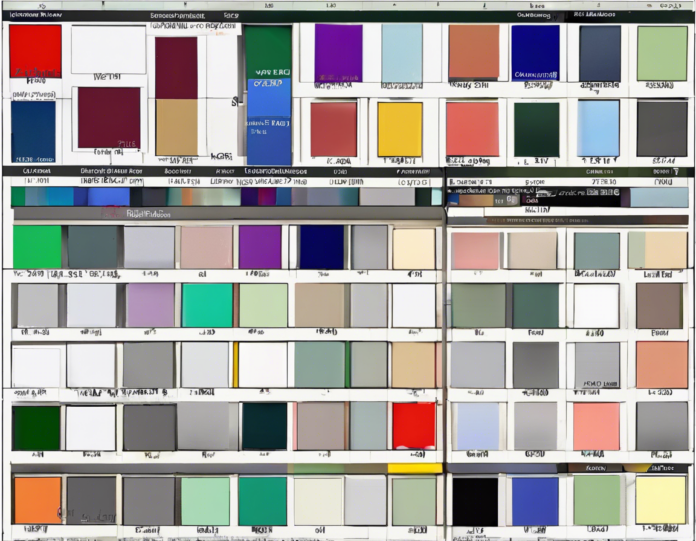Are you new to colour trading and feeling overwhelmed by the complex and colourful charts that dominate the trading world? Fear not, as this beginner’s guide will help you navigate the colour trading chart with confidence and ease. Understanding the chart is crucial for making informed decisions and successful trades in the volatile colour market. Let’s delve into the basics and nuances of the colour trading chart to set you on the path to becoming a savvy trader.
Introduction to Colour Trading Chart
The colour trading chart is a visual representation of price movements of a particular colour over a specific period. It plots price movements on the y-axis against time on the x-axis, allowing traders to analyze past price data and predict future price trends. Various chart types exist, with candlestick and line charts being the most popular among traders.
Understanding Candlestick Charts
Candlestick charts provide a detailed view of price movements by displaying open, high, low, and close (OHLC) prices for a specific time period. Each candlestick represents price action during that period, with green or white candles indicating bullish (upward) movement and red or black candles representing bearish (downward) movement. Patterns such as doji, hammer, engulfing patterns, etc., can offer valuable insights into market sentiment.
Deciphering Line Charts
Line charts, on the other hand, connect closing prices over a period to show the overall price trend. They are simpler than candlestick charts but provide a clear depiction of price movements. Traders use trend lines and support/resistance levels on line charts to identify entry and exit points for trades.
Key Indicators and Tools
Moving Averages
Moving averages smooth out price fluctuations and help traders identify trends. The SMA (simple moving average) and EMA (exponential moving average) are popular among traders for predicting price movements.
Relative Strength Index (RSI)
The RSI indicator measures the speed and change of price movements to determine when a colour is overbought or oversold. Traders use the RSI to anticipate reversals in price trends.
Bollinger Bands
Bollinger Bands consist of a moving average and two standard deviation bands above and below the average. They help traders identify volatility and potential reversal points in the market.
Interpreting Support and Resistance Levels
Support levels represent price points where a colour tends to find buyers, preventing it from falling further. Resistance levels, on the other hand, are price levels where a colour faces selling pressure. Understanding these levels is crucial for making well-informed trading decisions.
Risk Management and Trading Psychology
Successful colour trading goes beyond technical analysis and charts; it involves risk management and trading psychology. Setting stop-loss orders, position sizing, and maintaining emotional discipline are essential for long-term success in the colour market.
Frequently Asked Questions (FAQs)
- What is the best chart for colour trading?
-
The best chart for colour trading depends on personal preference and trading style. Candlestick charts are popular for detailed analysis, while line charts offer a simpler view of price trends.
-
How do moving averages help in colour trading?
-
Moving averages smooth out price data to identify trends and reversals. They serve as dynamic support and resistance levels for traders.
-
What are common chart patterns to watch for in colour trading?
-
Common chart patterns in colour trading include head and shoulders, double tops/bottoms, triangles, and flags. These patterns help traders predict future price movements.
-
How can I effectively manage risk in colour trading?
-
Risk management involves setting stop-loss orders, using proper position sizing, and diversifying your colour portfolio to minimize losses.
-
What role does psychology play in successful colour trading?
- Trading psychology influences decision-making and emotional control. Maintaining discipline and patience is crucial for emotional stability in trading.
In conclusion, mastering the colour trading chart requires a blend of technical analysis, risk management, and trading psychology. By understanding chart patterns, indicators, and support/resistance levels, you can make informed trading decisions and navigate the colour market successfully. Start honing your trading skills today and embark on your colour trading journey with confidence and knowledge.

